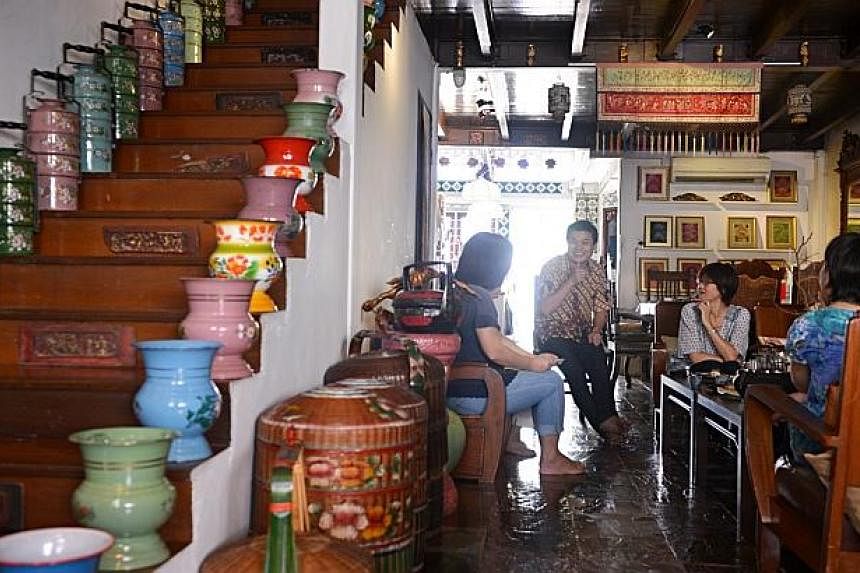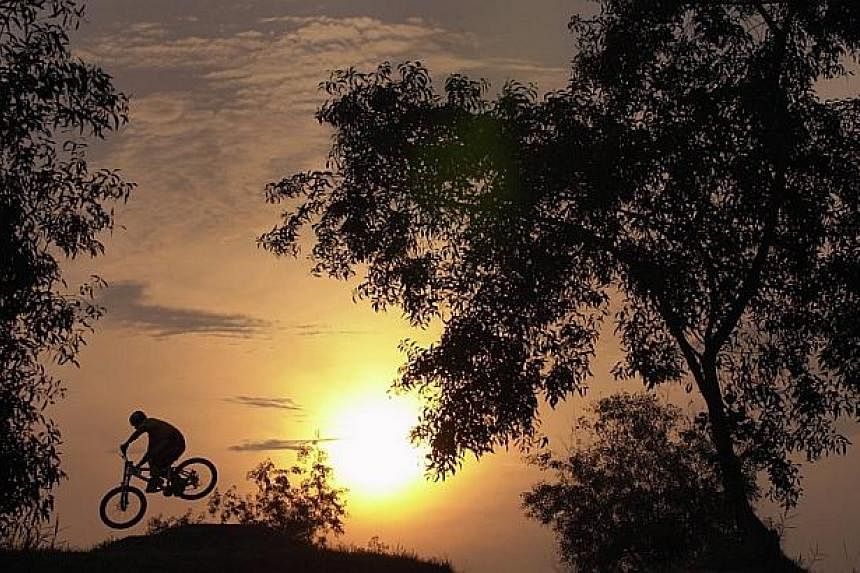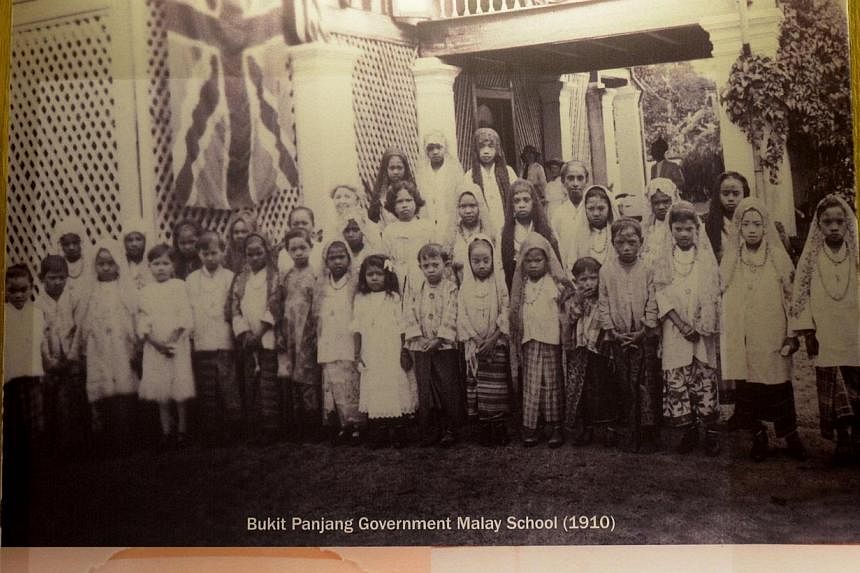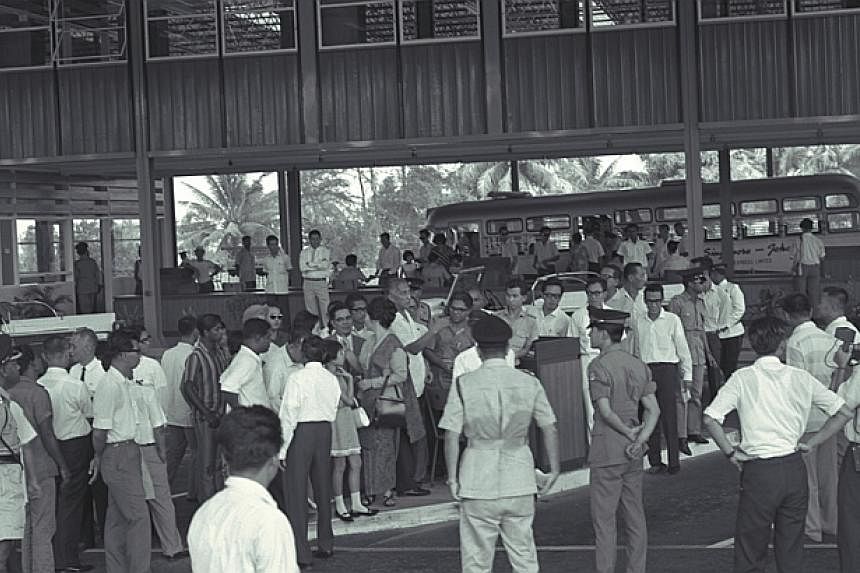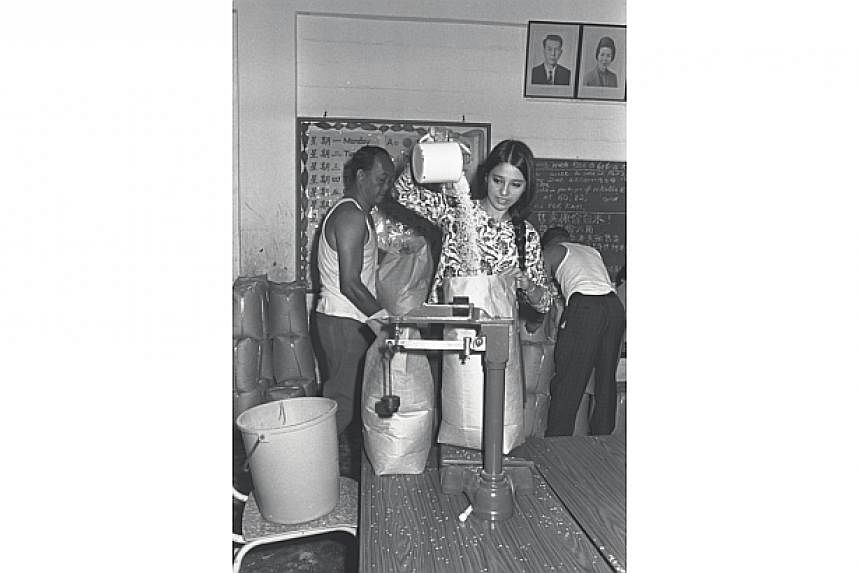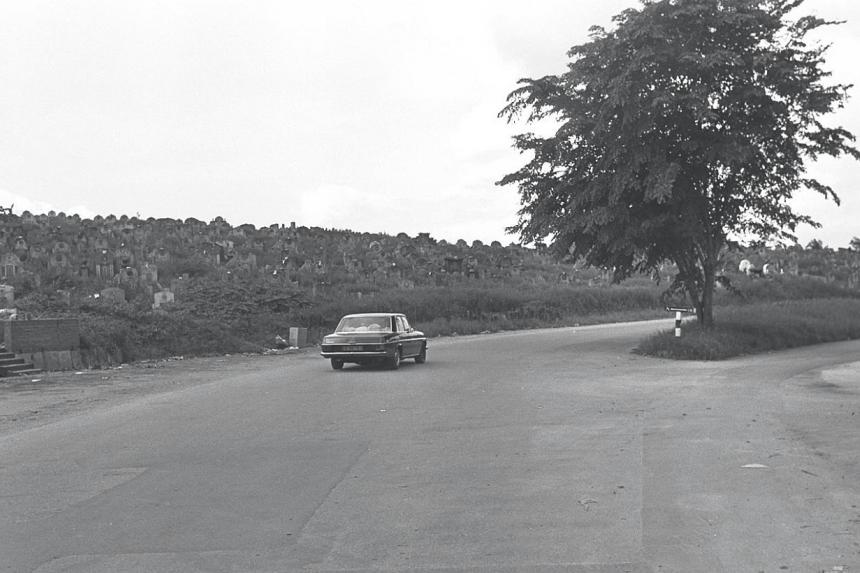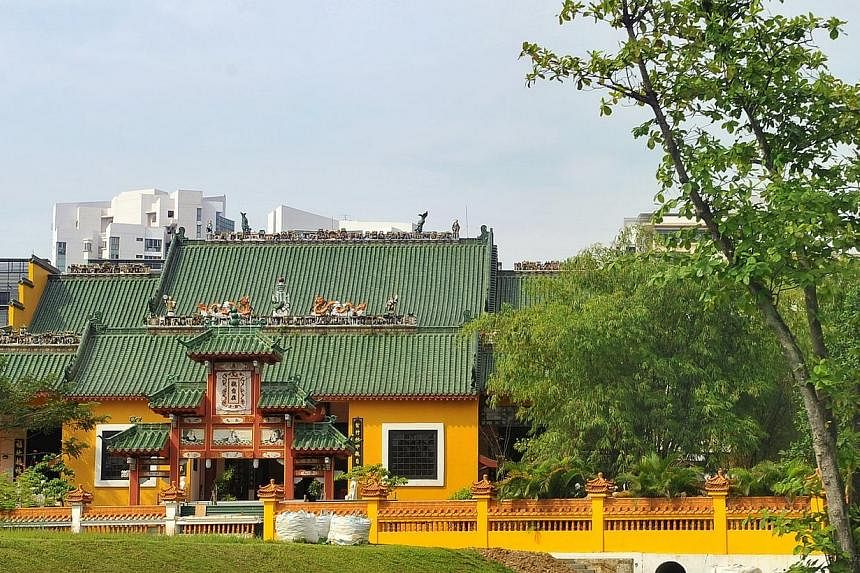SINGAPORE - Did you know that film-maker Jack Neo grew up in Kampong Chai Chee, or that there were quarries in Bukit Panjang?
Singapore's landscape has evolved constantly in the short 49 years since independence, and the National Heritage Board now wants to collect people's memories for how things were back then.
The Board is documenting the history of 10 towns, including Chai Chee, Joo Chiat and Bishan. The project for Singapore's golden jubilee in 2015 aims to collect photos, oral histories and stories from residents.
The other towns are Bukit Panjang, Woodlands, Yishun, Geylang Serai, Kembangan, Pasir Ris and Kallang.
Do you have memories of the places where you grew up? We take a look at them.
Chai Chee

Repairing of roads at Kampong Chai Chee. -- PHOTO: ST FILE
Chai Chee, which means "market place" in Hokkien, has seen its plantations become electronic plants, and attap huts replaced by soaring blocks of flats.
The town in the east began as a kampong set among coconut and banana trees. Development caught up with the villagers in the1970s.
Neo, who has said before that he has fond memories of growing up there, told The New Paper in an interview in 2002: "My old kampong is now an expressway! And where my house used to be, there is now a carpark. There used to be so much space. It's quite sad to see it gone now."
Joo Chiat

Firemen trying to put out a fire which broke out at a shop house in Joo Chiat Road and destroyed it. -- PHOTO: ST FILE
Joo Chiat has retained some of its erstwhile charm, with good food, conservation shophouses and a Peranakan museum.
It is named after plantation owner and philanthropist Chew Joo Chiat, once known as the "King of Katong".
Along the road named after this pioneer, sits the Intan, a private museum run by Peranakan Alvin Yapp. He conducts tours, which have to be booked in advance, culminating in an authentic Peranakan tea or dinner.
Many authentic Peranakan restaurants can still be found in the area.
Bishan

Singapore's biggest and one of the oldest Chinese burial grounds, the 113-year-old Kwong Wai Siew Peck San Teng cemetary, will soon make way for urbanisation like other cemeteries before it. -- PHOTO: ST FILE
Bishan, which can mean "green hills" or "jade hills" in Chinese, is now known for being the home of popular mall Junction 8 and brand-name schools like Raffles Institution, making it one of the most desired HDB towns to live in.
But you don't have to dig deep to uncover its recent past as one of the oldest Chinese burial grounds in Singapore, the Kwong Wai Siew Peck San Teng cemetery.
The main village in the area, Kampong San Theng, was established by immigrants from Canton. It was re-developed in the early 1980s, and the remains from approximately 100,000 graves are now housed at a columbarium.
Bukit Panjang

Voters queuing up to cast their votes at the Bukit Panjang School. -- PHOTO: ST FILE
Bukit Panjang is Malay for "a long spread of hills". It housed manufacturing plants such as the Nanyang Shoe Factory and the Lam Soon Canning and Rubber Factory four decades ago. There were also granite quarries and rubber plantations.
The first batches of locally produced fresh milk and ice cream were made in a 60-acre Cold Storage dairy farm that was set up in 1929. In the 1970s, the farm ceased operations.
It was developed as Zhenghua new town in 1984, and the name was later changed back to Bukit Panjang. Today, it is a thriving HDB town, and was the first new town to get a Light Rail Train (LRT) network.
Yishun

Yishun was originally Nee Soon, named after rubber magnate, banker and philantrophist Lim Nee Soon. Settlements in the area can be traced back to 1850, when plantation workers set up villages in the area. The area was densely populated, and developed into a new town by 1976.
Lim also set up a rubber factory in the area, which was later sold to prominent businessman Lee Kong Chian.
Nee Soon Camp was set up by the British in 1934, and in 1976 the School of Basic Military Training was set up there. It continued serving as a BMT school until 1999 but is now home to the SAF Music and Drama Company, as well as the HQ Medical Corps.
Geylang Serai

Geylang Serai is one of the oldest Malay Settlements in Singapore. In the 1840s, some Orang Laut (sea nomads) settled on the bank of the Geylang River. The settlement expanded to the Geylang Serai area in the later half of the 19th century.
The word "serai", which means lemongrass in Malay, comes from the extensive cultivation and growth of lemongrass plants in the area. The word "Geylang" is possibly from the Malay word "kilang", which means mill or factory. It could be a reference to the presses and mills in the coconut plantations in the area.
During the Japanese Occupation from 1942 to 1945, people started planting tapioca, or "ubi" in Malay. Part of Geylang Serai then became known as Kampong Ubi.
Geylang Serai now comes alive with a sprawling bazaar before Hari Raya Puasa every year.
Kembangan

Kembangan was a kampong till the mid-1980s. Today, it is populated with private homes.
The name Kembangan means "expansion" in Malay, and it was a predominantly Malay village, although several Chinese families lived there. The educational and social needs then were provided by a Sin Sheng School and the Kampong Kembangan Community Centre.
Woodlands

The northern town probably got its name from the rubber trees that once dominated the area in the past. Woodlands started off as a kampong. Villages in the area included Woodlands Village, Kampong Mandai Kechil and Kampong Kranji. Aside from rubber plantations, there were also poultry farms. The location used to be considered ulu or "rural".
Today, the area is densely poulated and headed for change. Seven million square feet of new commercial space is planned for the Woodlands Regional Centre, made up of two precincts.
The first is a retail hub called Woodlands Central, a 30ha area around Woodlands MRT and Causeway Point, and the second is the 70ha Woodlands North Coast, located between Republic Polytechnic and Woodlands Waterfront, which will be for business and lifestyle uses.
Pasir Ris

Sun, sand, sea and plantations. Besides plantations, Pasir Ris was also home to poultry farmers and fishermen.
Even in the 1950s, way before NTUC chalets were built, it was a holiday destination for Singaporeans.
Veteran grassroots leader Lee Ang Kee recalled in a Straits Times interview: "You could see busloads of picnickers on the beach during weekends and holidays. After that, we grassroots leaders would take part in gotong royong (Malay phrase meaning community-spiritedness) to clean up the litter left behind."
The shell motifs on its HDB flats is meant to reflect the seaside nature of the town.
Kallang

Kallang has heard the roar of Singaporeans supporting their national football team, the chords of national anthem Majulah Singapura many times during National Day celebrations, and till 1955, the buzz of aeroplanes taking off and landing at Kallang Airport.
It is named after a group of orang laut (men of the sea), called orang biduanda kallang, who lived in the vicinity of the Kallang River and Singapore River.
Singapore's first international airport was built here, and the building now houses the People's Association. The former National Stadium, built in 1973, was closed in 2007 and has been replaced by the Sports Hub. HDB flats were built here in the 1970s and 80s.
Sources: Straits Times Archive, National Library Board, www.myjoochiat.com, www.bp-map.blogspot.sg, Infopedia, remembersingapore.org
